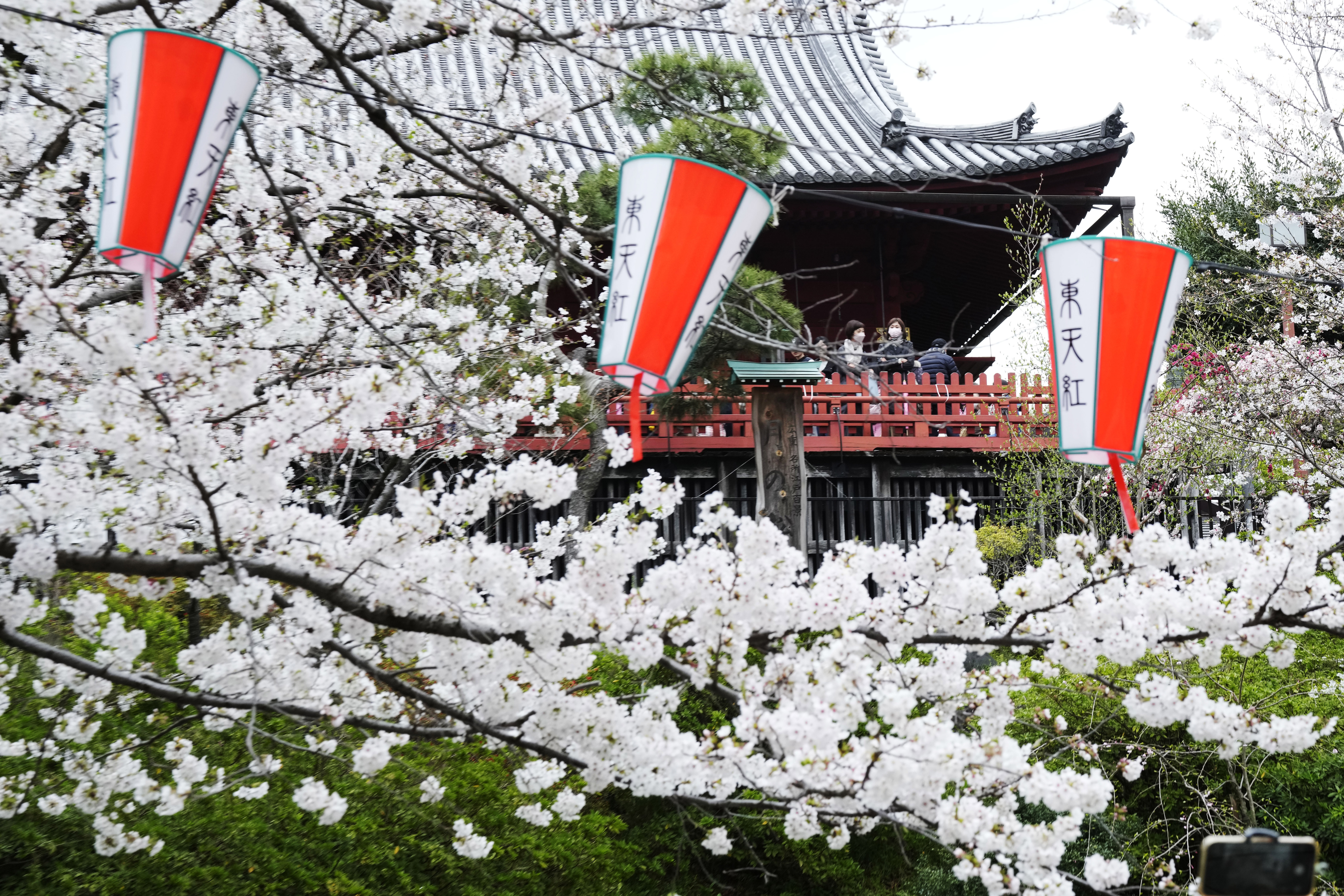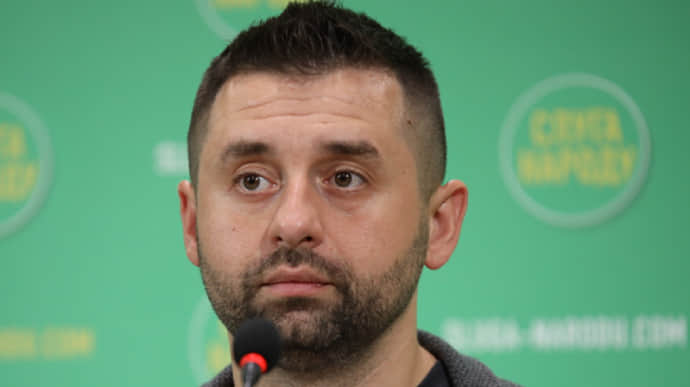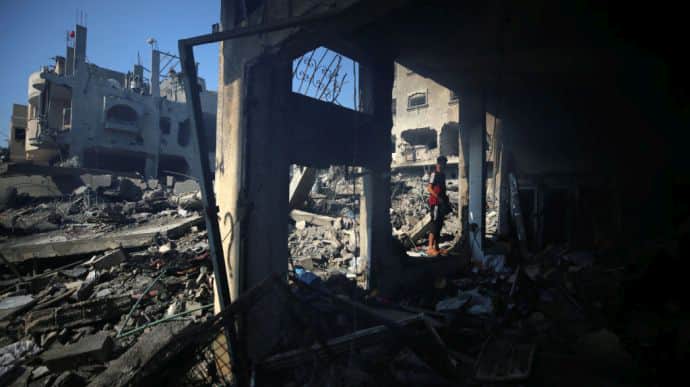Why America’s Longtime Ally in Asia Is So Anxious About Trump 2.0
The possible return of Donald Trump to the White House has bred a deep sense of insecurity among Japan’s business and political elite.

TOKYO — Here’s the good news from Japan. The cherry blossoms are stunning, the stock market is booming, and Tokyo’s Haneda airport is chockablock with foreign tourists.
The bad news is a pervasive sense of insecurity among Japan’s business and political elite. Being flanked by three aggressive nuclear-armed neighbors — China, Russia and North Korea — is bad enough; now comes the prospect of Donald Trump recapturing the White House.
Japanese scholars have long recognized a strain of fatalism running through their culture — one that, today, views the return of Trump almost like the earthquakes which have plagued the archipelago for centuries: destructive and perhaps inevitable. As in Europe, Japanese policymakers are determined not to be caught unawares a second time around. “Hope for the best, but prepare for the worst,” explained a top businessman.
The truth is that we are already living in a “Trump 1.5” world. Despite multiple civil and criminal charges, the ex-president is exerting extraordinary influence over current U.S. policy. Having swept to the Republican presidential nomination, he is calling the shots on Capitol Hill on issues ranging from the stalled Ukraine military aid package to the blocked Mexican border bill.
Conventional wisdom is that Europe would bear the brunt of Trump 2.0 foreign policy. His distaste for the EU trade bloc is well documented. He believes, with some justification, that Europe (particularly Germany) has long enjoyed a free ride — drawing the benefits of the NATO security umbrella without paying their dues.
Some of his anti-NATO rhetoric may simply be a way to shake down deadbeat allies. But any wavering on America’s commitment to NATO’s Article 5 mutual defense clause would reverberate all the way to Asia. Japan is not a member of NATO, but as America’s closest ally in Asia, any hint that it could no longer rely on its 72-year-old bilateral security treaty would be devastating.
It is not only Kyiv, London or Paris that worries about a Trumpian dirty deal to end the Ukraine war. Any agreement which appears to reward Russian aggression would, in Japanese eyes, encourage China in its own territorial ambitions. Taiwan is the obvious target, with some Japanese military experts warning privately that Chinese President Xi Jinping is likely to “do something” before his third term expires in 2027. (An economic blockade or a partial occupation of the Kinmen islands next to Taiwan are viewed as credible alternatives to a high-risk amphibious invasion of the main island itself.)
Japan’s worst fear is being caught up in a conflict over Taiwan, though it stands ready to defend itself (with U.S. support) if its own territory comes under attack. The wider fear is that the subjugation of Taiwan would merely be the first step toward China pushing America out of the west Pacific. The Japanese know what the U.S. military thinks about that prospect, but they have little notion of what is going through the mind of Trump the Dealmaker.
As regional tensions rise, Japan has responded by pledging to double its defense spending over the next five years. It is drawing closer to South Korea, overcoming decades of mutual hostility going back to the Second World War. And it is moving toward more robust deterrence, notably through developing a next generation fighter jet with the UK and Italy and new missile “counter-strike” capability. Joining the AUKUS grouping with Australia, the U.S. and the U.K. is also on the table.
But many questions remain about whether Japan’s Liberal Democratic Party-led coalition government can meet its spending commitments. Prime Minister Fumio Kishida’s approval rating has tanked (thanks to a party funding scandal) and he may have to call an election this fall. Kishida is also hobbled by his peacenik coalition partner Komeito, which will challenge every effort to interpret more liberally the constitutionally mandated “self-defense” clause covering Japan’s armed forces.
On the economic front, Trump 2.0 is equally discouraging. Tokyo has still not gotten over Washington’s refusal to join the Trans-Pacific Partnership regional trade agreement. That pass was sold by Hillary Clinton in the 2016 presidential election campaign and enthusiastically endorsed by Trump himself. Since then, the TPP has morphed into the Regional Comprehensive Economic Agreement, which includes China with no U.S. counterweight. Instead, America First has become embedded in U.S. trade and industrial policy, latterly through President Joe Biden’s Inflation Reduction Act which has subsidized U.S. companies to the tune of billions of dollars. Biden has kept most of Trump’s tariffs on Chinese goods, but he did remove Trump’s tariffs on Japanese steel. Trump, on the other hand, has promised that his second term trade policy would be even more aggressive than his first.
Over the past few years, Washington and Beijing have been severing their economic ties. Trump 2.0 would continue this trend toward “conscious decoupling,” forcing European and Asian allies to choose between the two powers. Japanese companies, which for two decades and more have heavily invested in China to take advantage of cheap labor costs, will have to adjust accordingly. Many have already done so, moving operations to lower-cost facilities in Thailand and Vietnam.
During my five-day trip to Tokyo, I attended a meeting of a new global think tank — the merger of the International House of Japan (I-House) established by John D Rockefeller III to repair U.S.-Japan ties after World War II and the Asia Pacific Initiative, set up by Yoichi Funabashi, the former newspaper editor, author and national security expert.
In 1929, Rockefeller visited Tokyo as part of a U.S. delegation to meet Japanese counterparts to discuss the crisis over Manchuria, the mineral-rich Chinese province long coveted by Imperial Japan. In the end, the talks went nowhere and Imperial Japan seized Manchuria, the prelude to a savage military expansion across south-east Asia which led to Pearl Harbor and the cataclysm of World War II.
Funabashi, an old friend, is not the only scholar or bureaucrat in Tokyo pondering whether we are indeed hurtling back in history to the 1930s, as Robert Kagan warned recently in The Washington Post. A return to high tariffs, anti-immigrant xenophobia, rampant nationalism and American isolationism — all of which prepared the ground for the outbreak of war.
On a more optimistic note, he wondered aloud whether there was a chance of “Biden 2.0” where an aging president scrapes out a victory against Trump, faces down the Democratic Party’s left wing and reverts to the center for his second term.
Biden 2.0 may, of course, turn into Harris 1.0 — an equally unpredictable prospect. Either way, my old friend Yoichi has some recommended bedtime reading: E.H. Carr’s The Twenty Years' Crisis, 1919-39.



